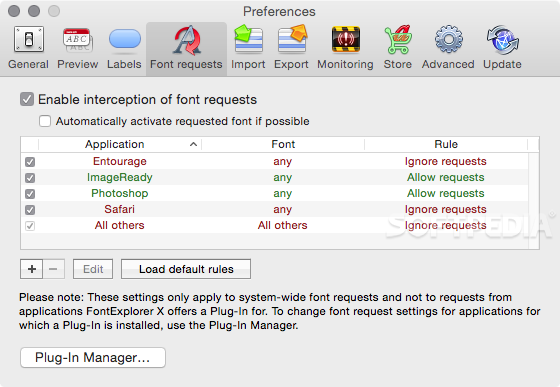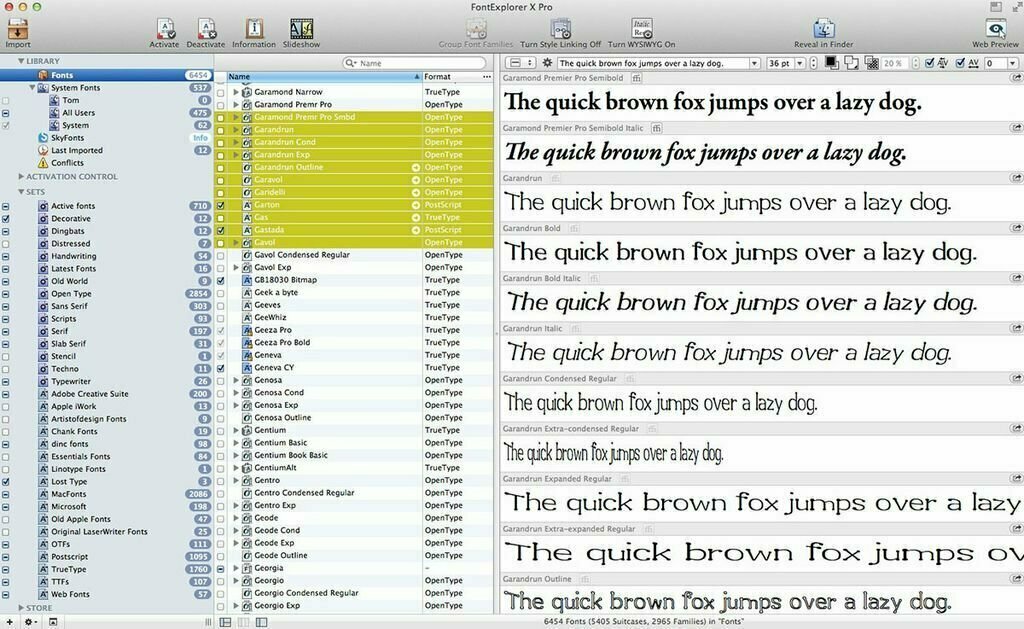

Now you can keep them all in one place, whether activated or no.
#LINOTYPE FONTEXPLORER X PRO MAC#
Also forget the confusion of remembering which part of the Mac you stored your fonts (did I put them in my user library? the local library? gah!). This is a godsend if you’ve accidentally thrown fonts into the system folder and are now unsure which belong there and which don’t. With all of FontExplorer X’s organizational features, you’ll never import new fonts into the big pile that is the Library: instead, you’ll find yourself importing them into the sets they match, or a set you’ve created for that client.įont Explorer X will also clean out your system fonts folders and system and application caches for you. Import them into the main Library, create a new set, or import them into an existing set. You can get discriminatory and import only OpenType, PostScript, or TrueType fonts, or any combination thereof. Importing Fonts into Fontexplorer X is a Refreshing Breeze That Will Cleanse Your Font Folders (5 out of 5) And FontExplorer X’s conflict management ensures that your active fonts won’t be fighting with one another.Ĭontinue to page 2 for a review of how FontExplorer X imports fonts, handles font data, its downsides, and more. Activating a dozen at a time, a much more common occurrence, took less than a second. Only need Futura Bold Condensed? You can activate just that. With the tick of a checkbox, you can open entire sets at a time, a single font family, or a single face within that family.

I have two grouping systems, one for foundries and one for characteristics like sans serif, pixel, dingbats, UPC, grunge, and so on.Īutomatic Font Activation, and the Fastest Activation and Deactivation in the West (5 out of 5)Ĭlient sets is another great way to use this feature, but I tend to get lazy and allow FontExplorer X to open these fonts when I open their files - FontExplorer X comes with plugins for InDesign, Illustrator, and Photoshop which recognize missing fonts and open a dialog asking if you wish to activate them.Īnd within FontExplorer X itself, activation and deactivation is a breeze. To the left is a facsimile of iTunes’ organizational system, in which you can group fonts into sets however you like. This feature comes in incredibly handy when searching for the perfect font for a particular block of text.

The “songs” are individual faces, and below that fonts can be previewed with whatever text you want, whether activated or not. iTunes-like Interface (5 out of 5)įontExplorer X is immediately familiar, organizing itself in an iTunes-like interface. Enter Linotype’s free, full-featured font management program, FontExplorer X.

You don’t need font management in OS X, but it sure makes things easier when working on multiple projects, all with their own sets of fonts. Just dump them into the fonts folder in the library of your choice (hard drive, user, and so on - see Apple’s Font Locations page for more information) and you’re good to go.īut if you’re a designer, you add fonts for one project, then another, and another, and before you know it your font menus are bogged down with hundreds of faces, and sorting through them is like finding an exacto knife in a stack of foam-core. Installing and managing fonts in OS X is a pretty simple process.


 0 kommentar(er)
0 kommentar(er)
